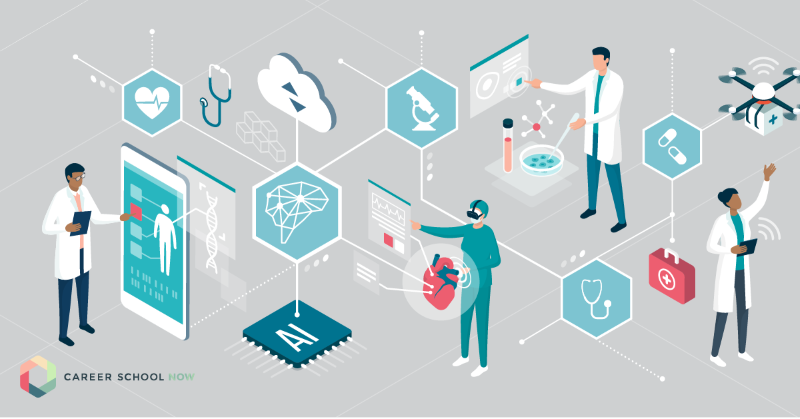The Importance of Medical Administration in Medical Care Management
The Importance of Medical Administration in Medical Care Management
Blog Article
Best Practices in Medical Administration for Improving Performance and Minimizing Costs
In the ever-evolving landscape of medical care, the quest of finest practices in clinical management is critical for improving effectiveness and curbing expenditures. By integrating innovative technologies such as digital wellness documents and telemedicine, medical care suppliers can simplify procedures and improve patient care. However, modern technology alone is not a remedy; optimizing resource allowance and fostering collaborative communication among treatment groups are just as important (medical administration). As companies make every effort to balance high quality and cost, what approaches should be prioritized to accomplish these dual objectives? The responses to these questions hold the secret to an extra sustainable health care system.
Leveraging Advanced Innovation
In today's rapidly evolving healthcare landscape, leveraging advanced innovation is no longer optional but essential for reliable medical administration. The assimilation of digital remedies into healthcare systems has actually transformed the way centers operate, improving processes and boosting patient treatment. Electronic Wellness Records (EHRs) are critical, giving comprehensive client information that can be accessed quickly by licensed employees, therefore lowering redundancy and minimizing errors. By centralizing client info, EHRs remove the demand for cumbersome paperwork and help with seamless interaction amongst healthcare companies.
Telemedicine is another technical development that has revolutionized person communication. It supplies comfort for both individuals and healthcare professionals by allowing remote assessments, which can decrease the demand for in-person sees and optimize visit organizing. Additionally, telehealth platforms can extend healthcare accessibility to country or underserved areas, connecting spaces in treatment distribution.
Furthermore, using Expert system (AI) and artificial intelligence is coming to be progressively prevalent in anticipating analytics, enabling early discovery of potential health concerns and even more educated decision-making. These modern technologies, when incorporated properly, can boost diagnostic precision and personalize individual therapy strategies, ultimately resulting in improved medical care end results and functional efficiency.
Optimizing Source Allocation
By strategically handling sources such as employees, tools, and financial resources, medical care centers can significantly boost their operational efficiency, improve patient end results, and minimize unnecessary expenses. The initial action in optimizing resource allocation involves carrying out a comprehensive analysis of existing possessions and determining locations where resources might be underutilized or overextended.
Prioritizing resource allocation based on client requirements and solution needs is vital. Executing flexible staffing designs can likewise enhance labor sources by adjusting employees allocation in feedback to fluctuating person quantities.
Financial sources ought to be thoroughly kept track of and alloted with critical foresight to support both short-term operational requirements and lasting institutional goals. This consists of investing in training programs that enhance staff competencies and adopting energy-efficient techniques that minimize functional expenses (medical administration). Ultimately, a maximized resource appropriation technique promotes a sustainable health care setting that is receptive, effective, and financially prudent
Streamlining Workflow Procedures
When health care centers goal to enhance operational performance, improving process processes comes to be a critical emphasis. Effective workflows lessen redundancy, get rid of unneeded steps, and improve coordination amongst health care experts. This approach not only speeds up solution distribution yet also improves the top quality of client care.

Next, technology assimilation plays a substantial role in improving workflows. Carrying out electronic health records (EHRs) and electronic physician order access (CPOE) systems minimizes documentation, reduces human mistake, and makes certain info comes to all appropriate workers. Additionally, leveraging telemedicine systems can enhance client examinations and follow-ups, decreasing the stress on physical infrastructure.

Inevitably, streamlined process cause cost decreases and enhanced individual fulfillment, fostering a more lasting healthcare environment.
Enhancing Data Administration
Structure upon streamlined process, maximizing information administration comes to be an important part beforehand healthcare management. Reliable data monitoring systems are critical for keeping accurate individual documents, boosting decision-making, and guaranteeing compliance with regulative criteria. By executing durable information monitoring solutions, medical care centers can improve the high quality go right here of client treatment while at the same time decreasing functional costs.
One key facet of improving information monitoring is the combination of advanced digital wellness record (EHR) systems. These systems promote the smooth exchange of client info throughout various divisions, decreasing duplication of tests and reducing mistakes. A well-designed EHR system supports information analytics, enabling medical care suppliers to determine patterns and make notified decisions pertaining to individual treatment.
Furthermore, securing patient information is critical. Adopting thorough cybersecurity steps, consisting of file encryption and normal audits, makes sure the honesty and discretion of sensitive information. This not just shields patients but likewise keeps the organization's online reputation.
Purchasing staff training is another important aspect. Enlightening healthcare professionals on data monitoring methods improves their capacity to efficiently use technology, leading to boosted patient results. In verdict, boosting data monitoring via sophisticated modern technology and thorough training is important for attaining efficiency and price decrease in clinical management.
Fostering Collaborative Interaction
An essential part in advancing clinical management is promoting collaborative communication amongst healthcare specialists. Efficient interaction is critical for guaranteeing smooth client care, maximizing therapy outcomes, and reducing mistakes. By motivating open dialogue and sychronisation across multidisciplinary teams, health care companies this post can enhance their operational efficiency and minimize unnecessary prices.
Central to this strategy is the combination of interaction modern technologies such as electronic wellness documents (EHRs) and safe messaging platforms, which facilitate the rapid exchange of critical individual details. These devices allow healthcare carriers to gain access to and share data in genuine time, making sure that all employee are notified and straightened in their decision-making procedures. Normal group meetings and interdisciplinary rounds can even more promote a culture of cooperation and accountability.
Training programs concentrated on enhancing interaction abilities are additionally necessary. These programs can help personnel establish the capacity to communicate details plainly and listen proactively, therefore minimizing misunderstandings and promoting a supportive workplace. Additionally, adopting standard interaction methods, such as SBAR (Scenario, History, Assessment, Suggestion), can simplify the exchange of details, making certain that vital details are conveyed succinctly and efficiently. Inevitably, cultivating joint interaction results in improved medical care delivery and expense financial savings (medical administration).

Conclusion
Incorporating advanced technology, such as digital health records and telemedicine, along with optimized source allowance and streamlined operations processes, is essential for boosting performance in clinical administration. Effective data management and cultivating collaborative communication among medical care teams are crucial for reducing redundancies and enhancing care high quality. By prioritizing preventative treatment and taking part in high quality renovation initiatives, health care organizations can achieve considerable price savings and boosted client outcomes, therefore guaranteeing sustainable index health care shipment in an increasingly complicated environment.
Report this page